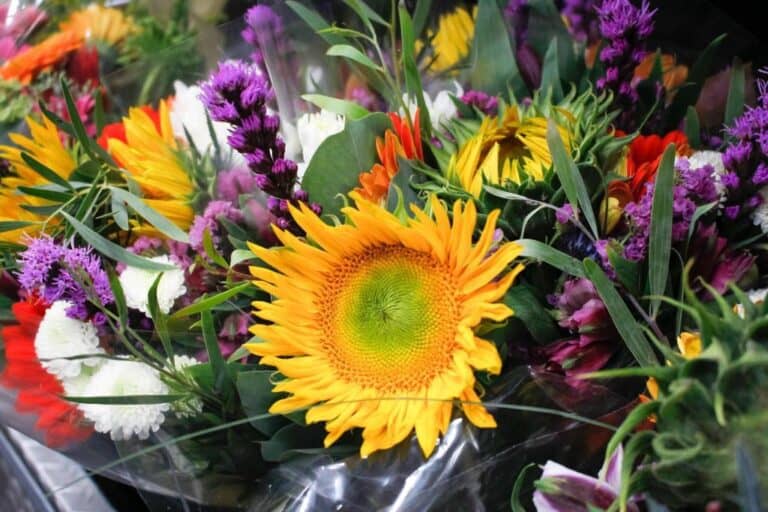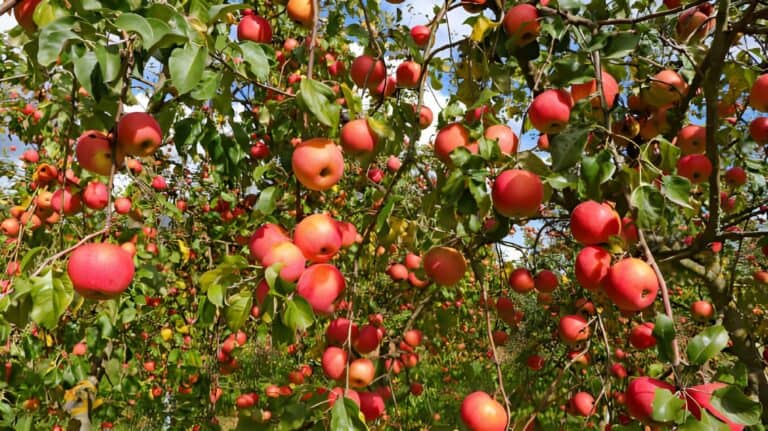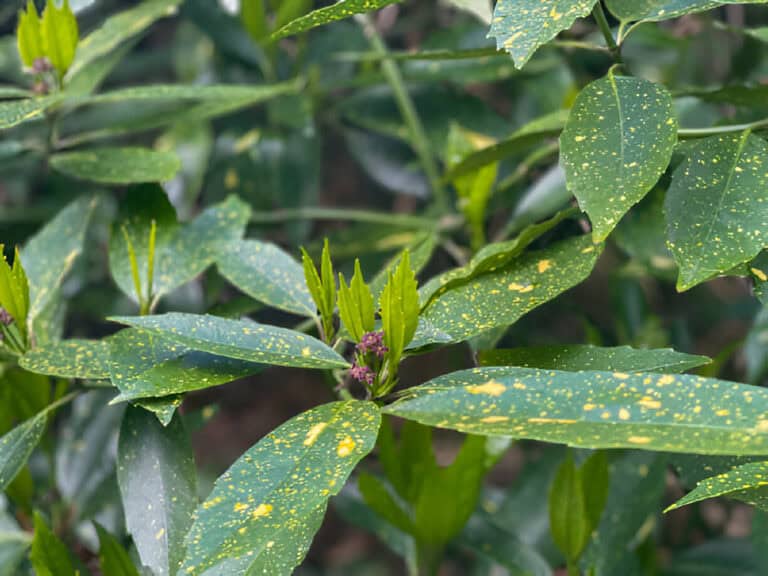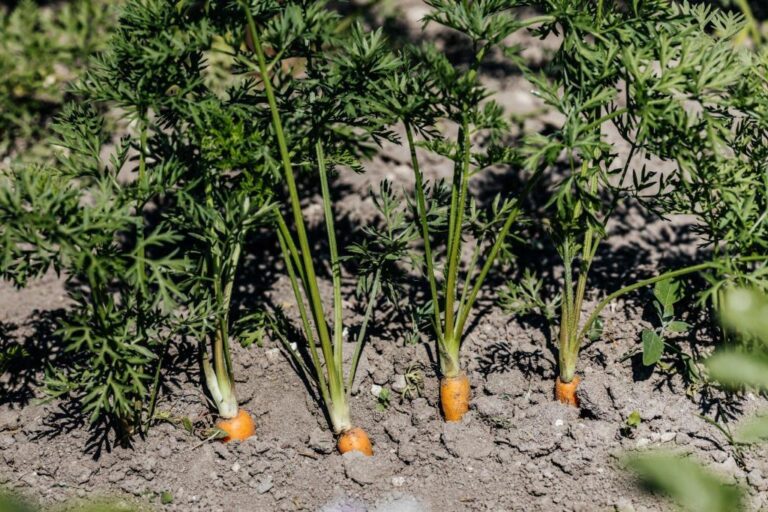How Tall and Big Bell Peppers Grow? Plant Height & Weight
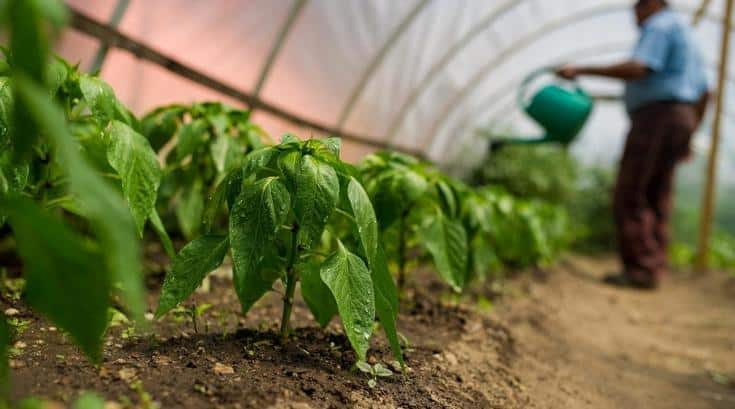
If you want to grow delicious bell peppers in your garden this year, you may be wondering how large the plants and fruits will grow. That way, you can figure out how many plants you’ll need and how much area you’ll need for your bell pepper crop.
The size of bell pepper plants and fruits depends on the variety. Some bell pepper plants are small, while others are big.
You can find the size of sweet bell peppers and hot peppers in the seed catalogs that you buy. The number of plants you need to grow a crop of bell peppers will also depend on how big they get once they are mature.
In this article, we will explore the size of the bell pepper plants. What factors affect how tall and how big the plants are?
How Tall Are Bell Pepper Plants?
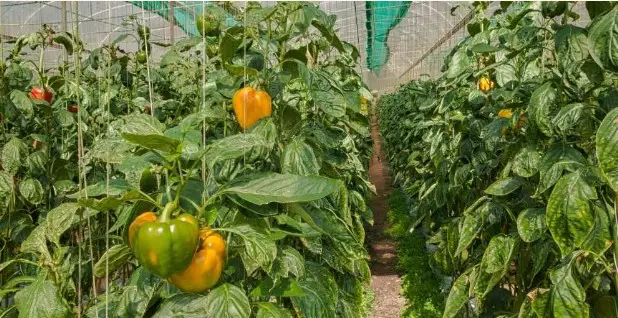
Bell pepper plants (Capsicum annum) that are mature can take up a lot of space in your garden. These plants may grow to be between 18 and 24 inches wide and 3 to 6 feet tall when grown in USDA zones 8 through 11.
However, those numbers are reached in an ideal condition for growing peppers. These plants need at least 6 hours of direct sunlight per day and well-drained soil. The peppers will grow best when the soil temperatures are above 60 degrees Fahrenheit. Space the peppers 18 to 24 inches apart in the garden for for best spacing. Fertilize them every 2 to 3 weeks to help them grow during the season.
Other Factors That Influence Size of Bell Peppers
The tiniest bell pepper plants can be as little as 1 foot wide and 6 inches tall. This is due to being exposed to temperatures under 50 degrees Fahrenheit. These are simple vegetables to cultivate and can frequently withstand mild winters, but they must be covered to stay alive.
If you’re planting peppers in a pot, place it as close to an exterior wall as possible. Better still, bring it inside during the evening, when temperatures frequently fall below those of the day.
The Old Farmer’s Almanac says bell peppers require heat, full sun, and well-draining soil to grow and thrive. This shows how important meeting these conditions is for plant growth.
They also require water, which Gardener’s Path recommends at 1 to 2 inches each week, especially while they’re bearing fruit. You may need to water your plants every day if you live in a hot region.
How Fast Do Bell Pepper Plants Grow?
Bell pepper plants are relatively easy to grow and can be harvested in about 60-90 days. The plant will grow to a height of about 18 inches and will produce bell peppers in different colors, including green, red, yellow, and orange. Sweet pepper plants and hot pepper plants grow quickly. You can start them from seed or transplant them. This makes them popular for home gardeners.
Note that the average days to maturity on the seed packet is the number of days from transplant to fruit.
How Tall Do Pepper Plants Need to Be Before Planting?
When it comes to planting peppers, there is no one-size-fits-all answer. The size of the pepper plant you choose to plant will depend on the different varieties of bell peppers you are growing and the climate in which you live.
However, pepper plants should be around 12–18 inches tall before harvesting. If you are growing a smaller variety of pepper, or if you are gardening in a cooler climate, then 10-12 inch plants may be sufficient. If you are growing a larger pepper variety, or if you are gardening in a warmer climate, then 18-inch plants may be necessary.
There is no definitive answer for the space needed for an individual pepper plant in order to be planted. In general, though, most pepper plants require at least 18 inches of space between them in order to grow and produce bell peppers fruit.
If you are planting peppers in a garden bed, make sure that the bed is at least 18 inches wide. If you are planting peppers in a container, make sure that the container is at least 18 inches deep and has plenty of drainage holes.
How Tall Do Bell Pepper Plants Grow in Pots?

Bell peppers can be grown in pots, but the plants will grow taller if they are planted in the ground. Bell pepper plants, as well as other types of sweet peppers, typically grow taller than hot peppers like jalapeño and serrano. How tall a bell pepper plant will grow in a pot depends on the size of the pot and the variety of bell pepper plants.
Most sweet bell pepper plants will grow between 12 and 18 inches tall and become quite bushy in a pot, showing a typical pattern of plant growth. Peppers can reach a height of 35 to 45 inches when grown on the ground.
Growing Bell Peppers in Pots (Benefits vs. Drawbacks)
First, I want to illustrate the benefits and drawbacks of growing your peppers in pots. We always grow some peppers in pots, but we also have an in-ground garden.
The Benefits of Growing Bell Peppers in Pots
The benefits of growing in pots include better mobility, reduced weeding, and aesthetic appeal. If you have a balcony with good sunlight exposure, you can probably grow bell peppers in a pot!
There are also a wide variety of attractive pots to add some class to your container plants. Finally, thanks to the smaller size, there will be little to no weeding all season!
Drawbacks to Growing Bell Peppers in Pots
Growing peppers in pots has drawbacks. These include a large footprint, more watering, and smaller yields. While the mobility of a potted plant is great, the smaller volume of soil typically leads to more watering and smaller pepper yields. We also have the problem of underestimating the size of fully grown pepper plants.
Since the cost of entry is relatively low, we always recommend trying one or two potted pepper plants for the first time. Get a gauge for how much space you can afford to dedicate to the plants and avoid potentially overcrowding a small balcony space.
| Also see: Multi Color & Tri Color Bell Peppers |
Growing Bell Peppers in the Grounds (Benefits vs. Drawbacks)
The Benefits of Growing Bell Peppers in the Ground
There are many benefits to growing a plant in the ground as opposed to in a pot. When planted in the ground, bell pepper plants have more access to nutrients in the soil and can grow larger and stronger. It increases how many bell peppers per plant produces compared to growing in pots or containers.
In addition to that, plants that are grown in soil are better able to withstand pests and diseases. Growing plants in the ground means that they can attract beneficial insects, which can help control pests.
Finally, when plants are grown in the ground, they often become more drought-tolerant, meaning they need less water to thrive.
Drawbacks to Growing Bell Peppers in the Ground
When growing bell peppers on the ground, there are a few drawbacks to pay attention to. One is that bell peppers need consistent moisture to grow well. If they are grown in soil that is too dry, they will not produce many fruits.
Another drawback is that bell peppers can be susceptible to pests and diseases, which can damage the plants and reduce yields. Also, bell peppers grown in the ground tend to be a little pricier than those grown in containers. This suggests that home gardeners might find container gardening cost-effective. Soil quality, climate conditions, and other factors all play into the cost of production.
| Read: Bell Peppers Male and Female – What’s the Difference? |
How to Grow Bell Peppers in Pots (Quick Steps)
Start here for a quick-start guide to growing your bell peppers in pots. We go into greater detail on each step later in the article, but let’s start with a basic overview of the process of growing peppers in containers.
Here is some guidance on how to grow bell peppers in pots
1. Get seeds and supplies.
Buy seeds, pots, soil, fertilizer, and stakes for growing your bell peppers. It’s best to have all the supplies in hand on day 1.
2. Sow seeds indoors.
Start pepper seeds indoors in a light, fluffy seed starter mix. Keep the seeds moist and warm to initiate germination.
3. Provide light when seeds sprout.
We recommend LED grow lights for pepper seedlings, but a sunny window is acceptable if you’d prefer to keep the lights off.
4. Begin fertilizing.
Begin with a light fertilizer feeding to help your young plants grow faster. After 3-4 weeks of growth, the bell peppers will be strong enough to handle full strength. Here are some recommended fertilizers.
5. Transplant into larger pots after 2-3 weeks.
6. Prune any early flower buds.
As the plants grow, they may begin to produce flowers while still indoors. We recommend plucking early flowers until the plants have been outdoors in their final planting location for 2-3 weeks.
7. Harden off the plants.
Once the risk of frost is gone, and nighttime temperatures are consistently above 55°F, your bell pepper plants can go outside. Make sure to slowly adjust them to the outdoor elements, beginning 2-4 weeks prior to moving them permanently outside.
8. Water regularly.
Peppers like even watering, but never like to be overwatered! Keep them moist but never soaked. Allow the water to drain away from the plant roots. Please read here for details on how often to water bell peppers in pots.
9. Adjust nutrients as plants produce peppers.
Once bell peppers begin to fruit, they need less nitrogen and more phosphorus, potassium, and calcium to produce lots of peppers. Fertilize the plants every few weeks with a balanced fertilizer, such as 10-10-10.
10. Harvest the peppers as they ripen.
Bell peppers can be plucked when they have reached a mature size. They are often picked early, while still green in color, but will eventually ripen to a beautiful red color. They are sweeter and more nutritious when fully ripe!
With the basic steps laid out, let’s get into the details of growing bell peppers in pots!
Ideal Containers (Size and Type) for Growing Bell Peppers
This is a big question. How big should your containers be for growing bell peppers? We recommend using a container with at least 3 gallons of volume. For bell peppers, the bigger, the better.
If you have the space for a larger pot, you will get much better yields with 5-10 gallons of volume. Choose a container that suits your planned location for the plant. However, pots of less than 3 gallons will not produce as many full-sized peppers.
Tip: If you are reusing an old pot, clean it out thoroughly. If they house plants with diseases or bacteria, they can spread them to the new soil and plants. Learn how to safely disinfect with bleach here.
In addition to a large pot, you will need some seed trays for starting your seeds. These can be found at any local nursery or home improvement store. They typically come in 6-cell units and are cheap.
We use these sturdy containers for bottom watering the young plants indoors. This step is essential for promoting healthy plant growth.
Do Bell Pepper Plants Need a Trellis?
One of the most important things to consider when growing bell peppers is whether or not they need a trellis. The answer is, that it depends. Bell pepper plants can grow quite large, so if you have limited space in your garden, you may want to provide them with a trellis to grow on. This will help keep the plants organized and make harvesting the peppers easier.
If you do choose to provide your bell peppers with a trellis, make sure it is sturdy and tall enough to support their weight. You can either build your own trellis or purchase one from a garden store. When attaching the trellis to the plants, be sure to use soft ties or twine so as not to damage the stems.
Bell peppers can also be grown without a trellis, but they may become leggy and produce fewer fruits. If a trellis is not available, the plants can be trained to grow along a fence or on a wire mesh.
Final Thoughts
Bell pepper plants are fast-growing vegetables that can be planted in the garden in late spring and will produce ripe peppers by early fall. Bell peppers are a warm-weather crop and will not tolerate frost, so bell peppers should be harvested before the first freeze.
Depending on the variety, bell pepper plants can grow up to 24 inches tall and may need to be staked or caged to keep them from falling over.
The peppers will grow best when the soil temperatures are above 60 degrees Fahrenheit. Space the plants 18 to 24 inches apart in the garden, and be sure to fertilize them every 2 to 3 weeks.

